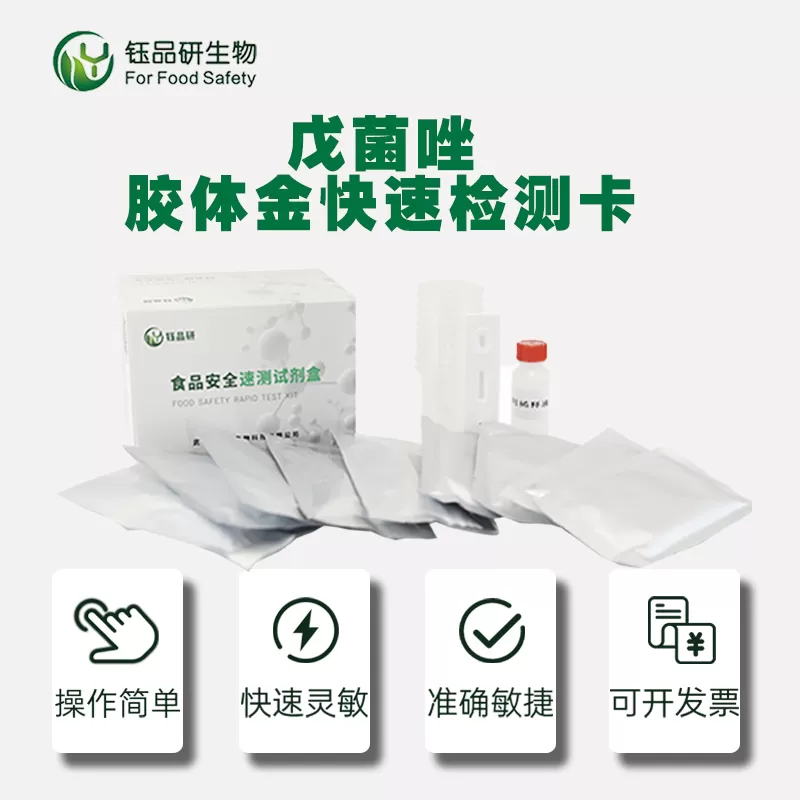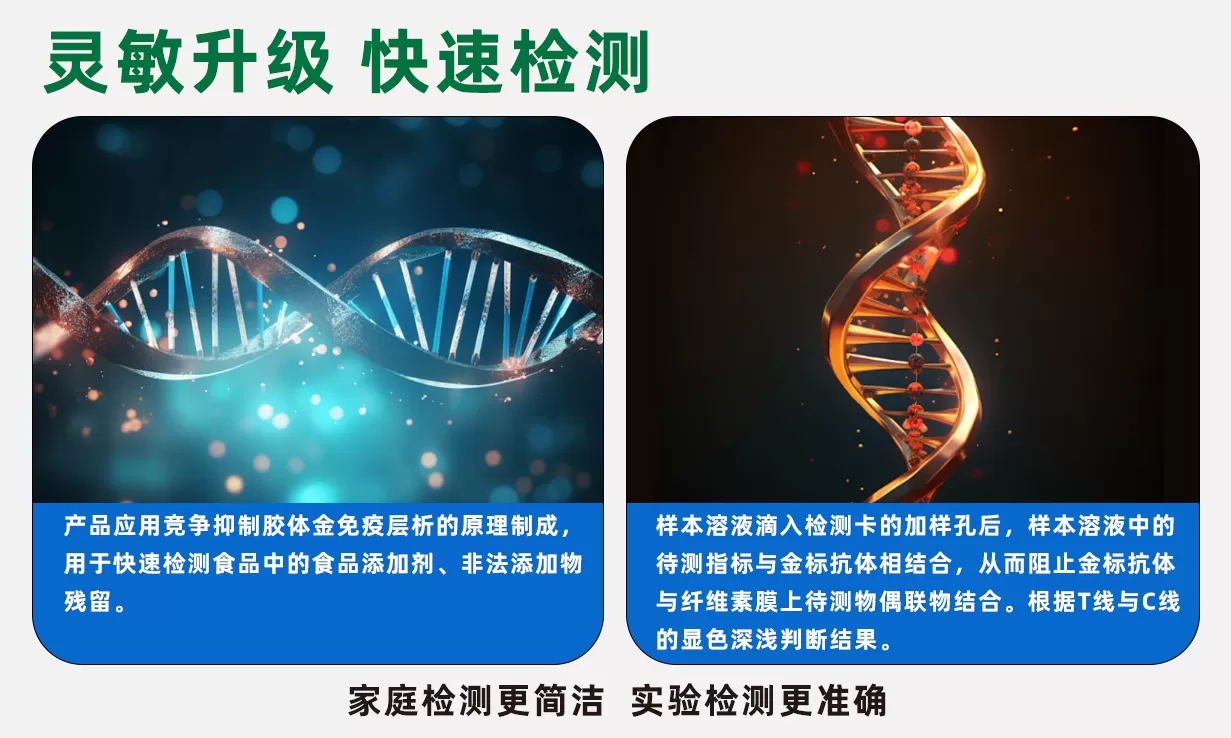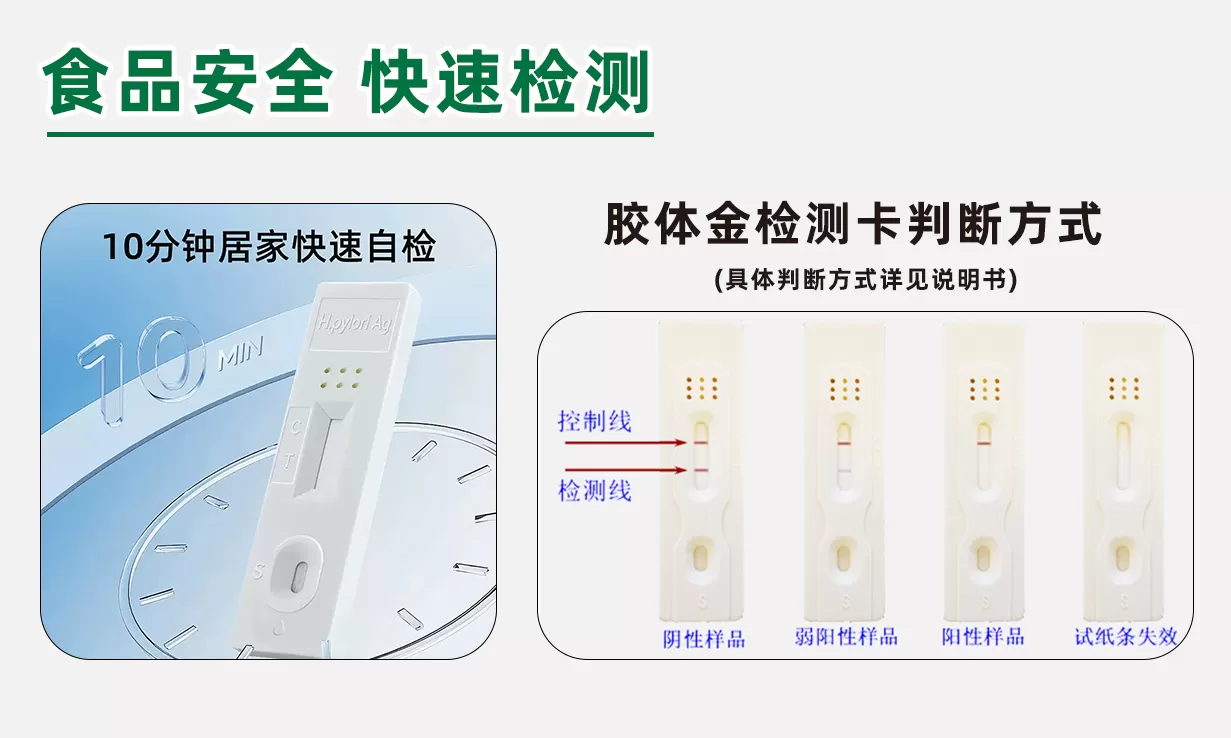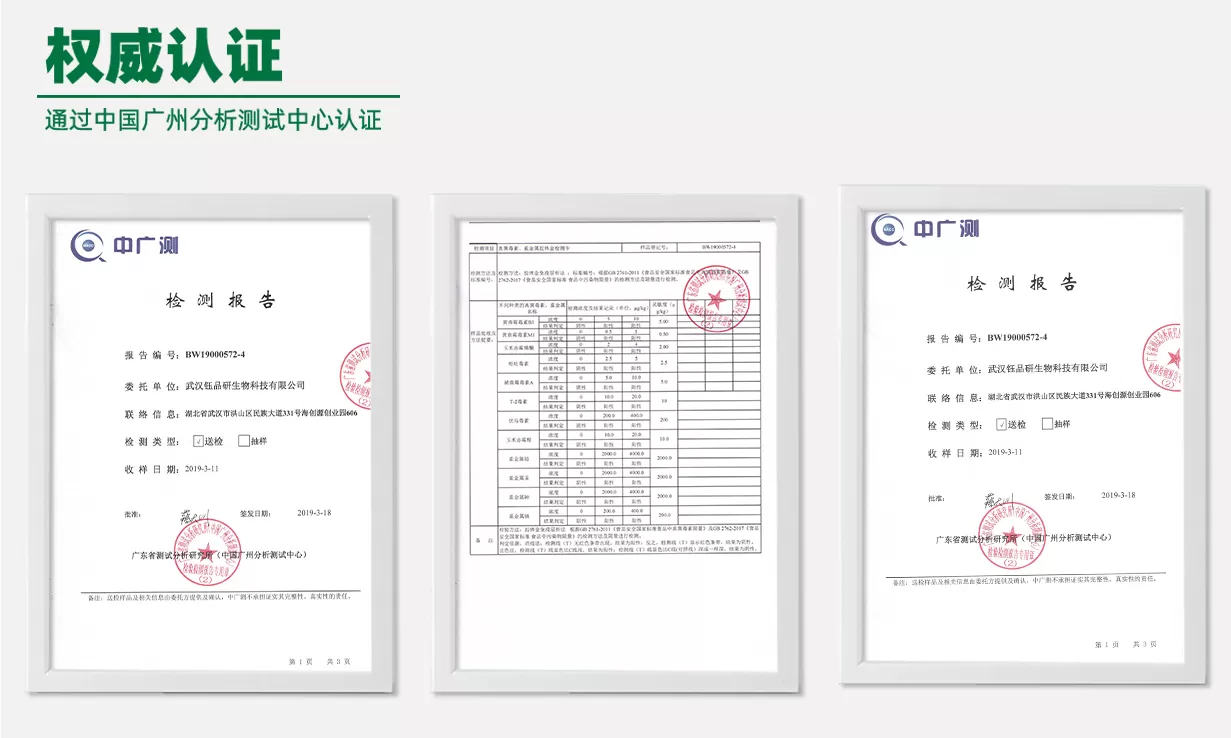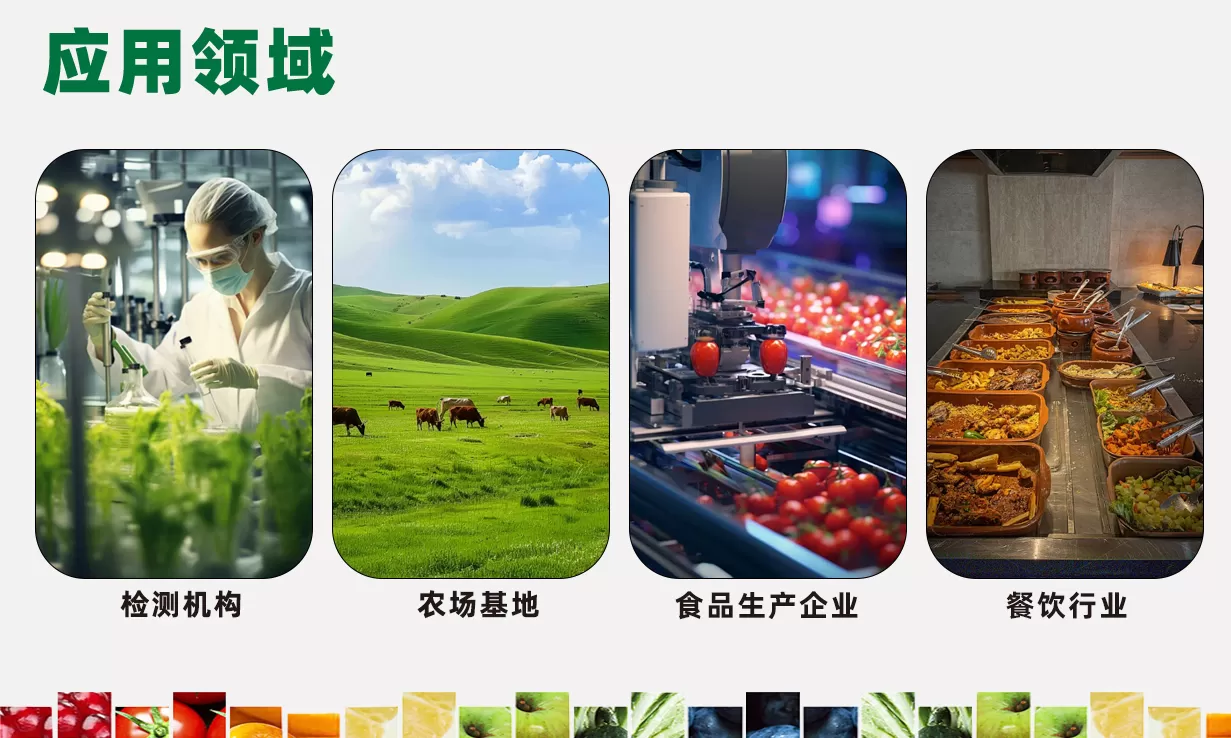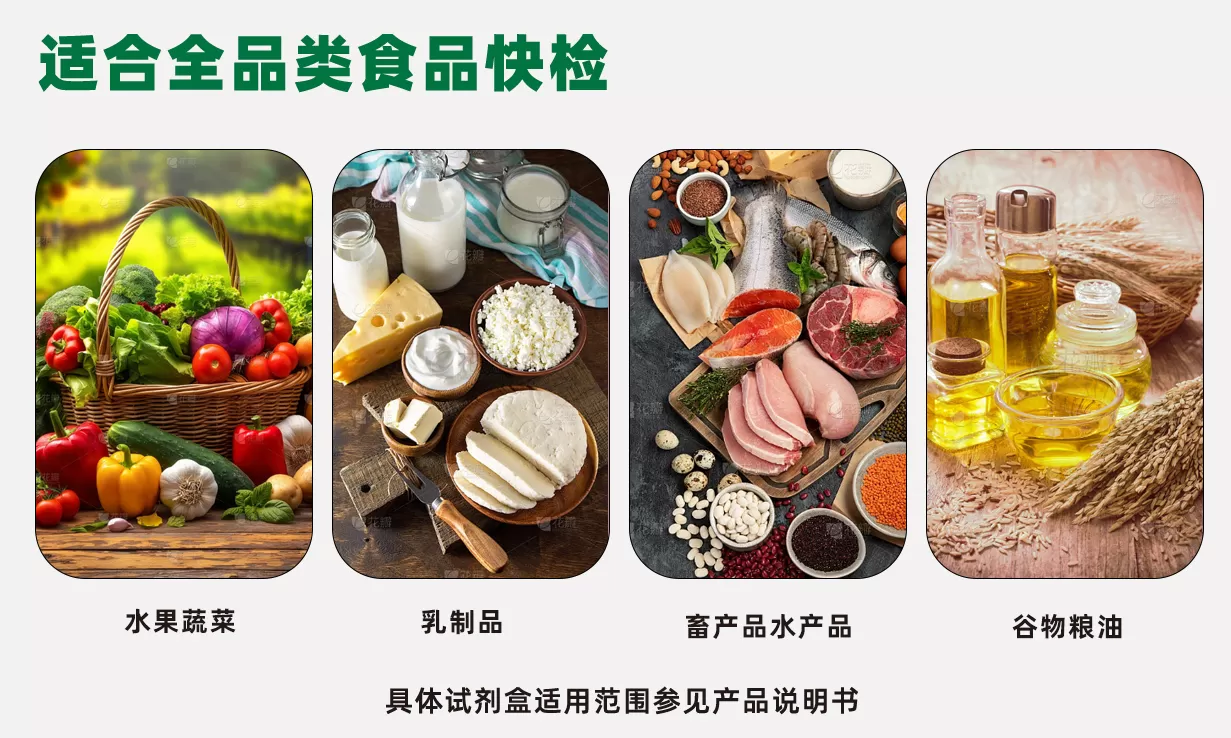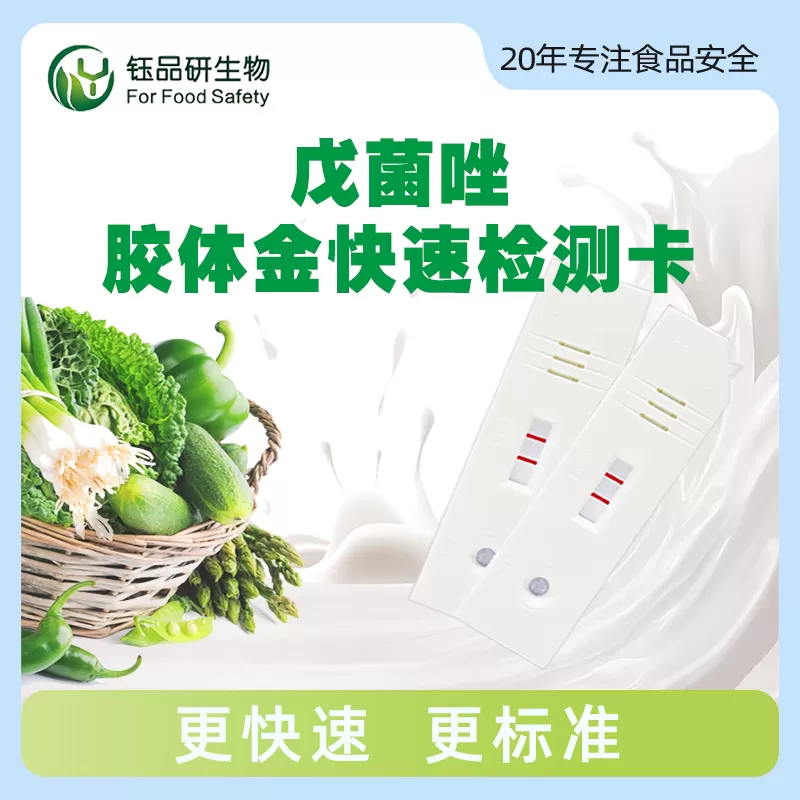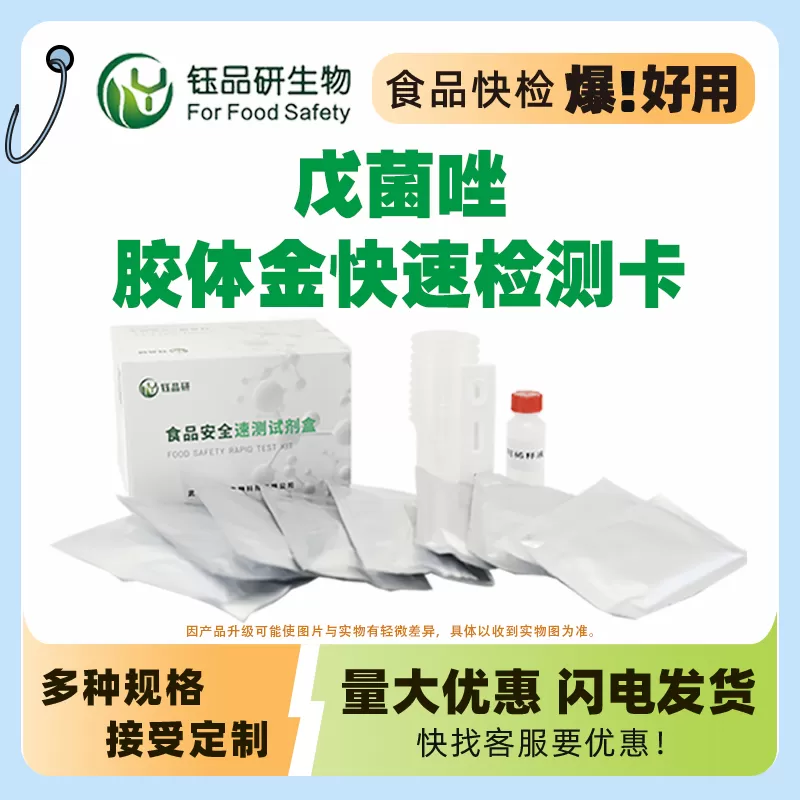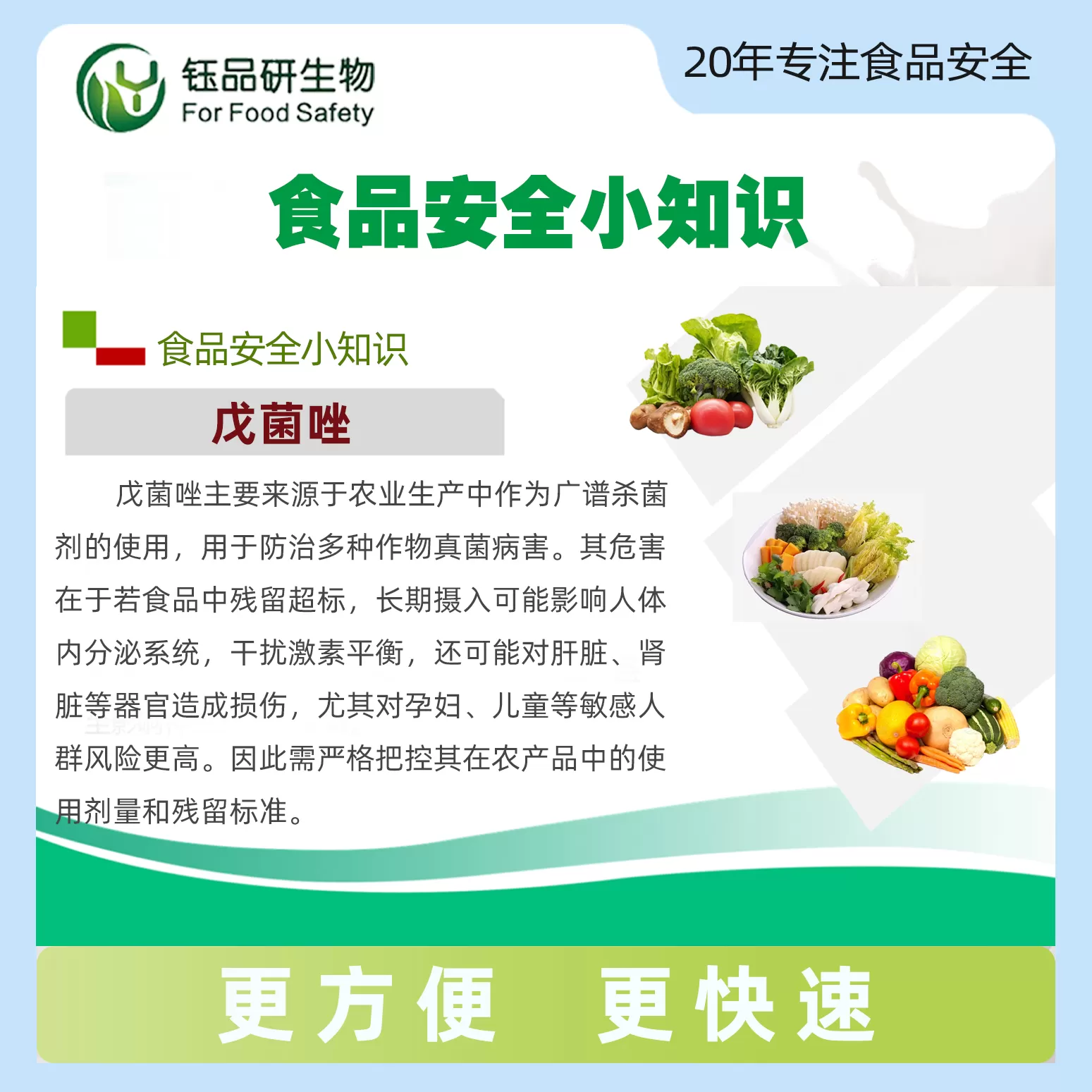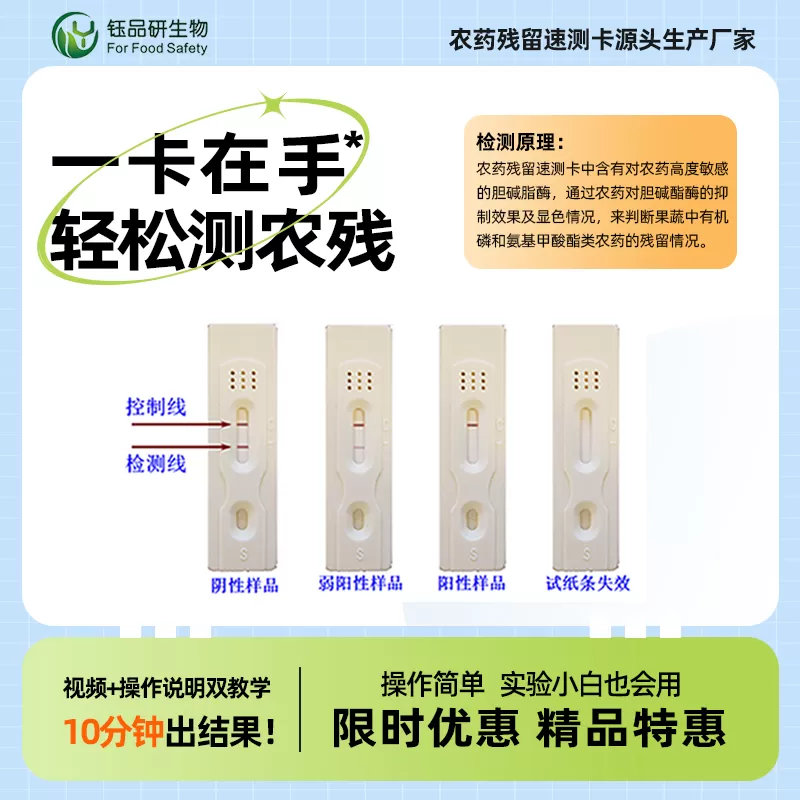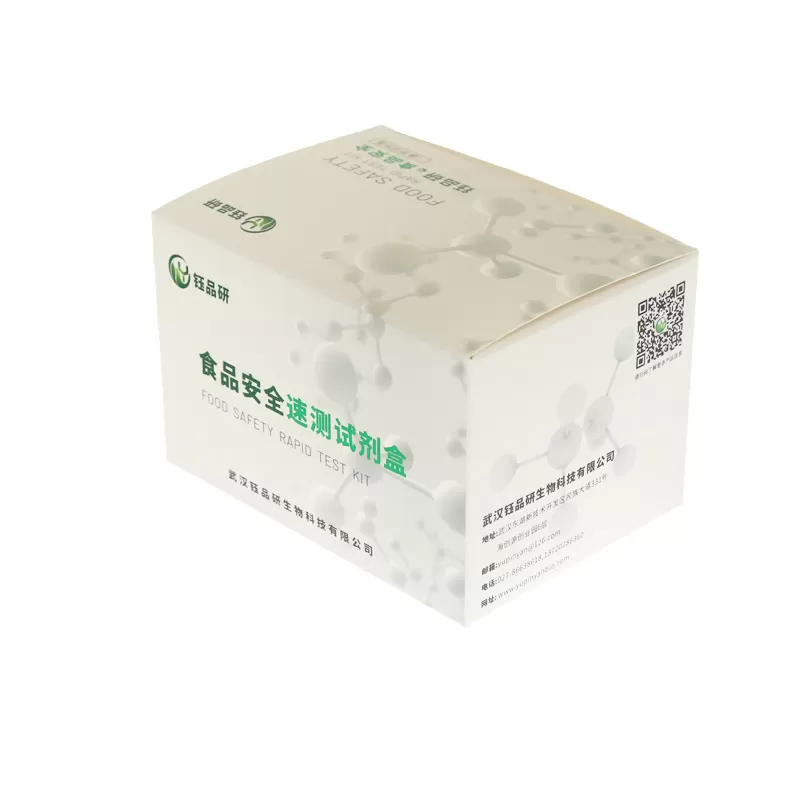Penconazole Rapid Detection Card (Colloidal Gold Method) Instructions for Use
1. Summary
Penconazole is a systemic triazole fungicide with both protection, treatment and eradication effects. It is a sterol demethylation inhibitor. It can be absorbed by the roots, stems, leaves and other tissues of crops and conducted upward. The results of indoor activity measurement and field efficacy test show that it has a good prevention and control effect on grape leucorrhea.
2. Detection Principle
This product adopts the principle of competitive inhibition immunochromatography. The penconazole in the sample binds to the specific antibody labeled with colloidal gold, which inhibits the antibody from binding to the antigen on the NC membrane detection line (T line), resulting in a change in the color depth of the detection line. No matter whether the sample contains penconazole or not, the quality control line (C line) will develop color to show that the detection is valid.
Third, the intended use
Fresh vegetable and fruit samples are initially screened to ensure that the content of penconazole is not higher than the national standard.
IV. Cross-reaction and product performance
Adding 10ppm of triadimefon, triadimefon, triadimefon, and carbofuran is negative;
V. Minimum detection limit of sample
0.05mg/kg (ppm)
VI. Main components
Component name
20 parts/box
Component name
20 parts/box
Pentoxazole detection card
20 parts
General extract of agricultural residues
2 Bottle
Instruction manual
1 parts
1 Secondary dropper
20 pieces
Seven, storage conditions and valid period
Original packaging: 4-30 ℃ Dry storage in the dark, valid period of
8. Sample requirements
1. Avoid spoilage and deterioration of the sample;
2. Avoid large pieces of soil (which can be thrown off or dialed off with other clean items).
9. Test method
Sample pre-treatment
1. Take 20-50g representative sample and chop/shred (less than 1 cm square). Weigh 20.05g sample in a 50ml centrifuge tube, add 6mL of general-purpose agricultural residue extract, cover it, oscillate the vortex or manually vibrate up and down for 1 minute, and let it stand for 1-2 minutes, which is the sample solution. According to the detection needs, dilute according to the table below, and mix well to be the liquid to be tested.
Note: The following limited execution standards are GB2763-2021, GB 2763.1 - 2022
Sample species
GB 2763 Limited (mg/kg)
Detection limit
(mg/kg)
Sample solution (μL) + extract (μL)
Watermelon
0. 05
0. 05
600+400
pickled cucumber, zucchini, artichoke
0. 06
0 06
500+500
eggplant
0. 09
0. 09
400+600
cucumber, pear, peach, nectarine, strawberry, melon fruit
0. 1
0 1
300+700
tomato, bell pepper, paddy fruit (except pear), grape
0. 2
0. 2
150+850
The following samples are first mixed according to 100 μL sample solution + 900 μL extract, and then diluted according to the table below, which is the solution to be tested.
gallons
2
2
150+850
10, sample detection
1, please complete the follow-up test within ten minutes after the treatment of the tested liquid is completed;
2, please read the product manual carefully before use, and return the sample and product to room temperature;
3, take 100 μL of the tested liquid and add it to the microwell, pump up and down 4-5 times and mix, start the first step of reaction at 20~ 40 ° C and time for 3 minutes;
2, take out the detection card, and place it flat on the desktop to transfer all the liquid in the gold microwell to the sample well, and time for 6 minutes.
eleven, interpretation of test results
visual:
negative (not detected): T line color than the C line color dark or as deep;
positive (detected): T line color than the C line light or T no color
invalid: C line does not develop color and regardless of whether the T line color.
instrument interpretation: see the instrument instruction manual
twelve, precautions
1, this product is only for qualitative screening, if you need to confirm, please refer to the relevant national standard method.
2, encounter positive samples recommended repeated verification.
3, pre-test sample processing tools such as knives, scissors, stickers should pay attention to cleaning, to avoid cross contamination.
4, detection temperature should be controlled at 17-30 degrees, too high or too low will affect the test results.
5. Before testing, it is recommended that the sample be fully stirred and mixed (if the sample is less, the representative part should be taken, and then the sample should be weighed), so that the test results can more realistically reflect the actual drug residue of the sample.
6, The test standard liquid solvent is the extract, and the water and organic solvent shall not be used as a negative control.
7, Methanol is generally selected for the standard liquid solvent during the verification of the standard, and the final sample is recommended to be 10-50 μL.
8, the reagent of this product is a disposable product, and the waste after use should be treated as a general chemical.
9, the market-related products are complicated, and the quality and performance of each manufacturer are different. Horizontal comparison with congeneric products is not recommended.
10, the reagents involved in this product are safe and reliable, do not contain carcinogenic, highly toxic, flammable, explosive, strong corrosive reagents, but do not eat.
